Are you sick and tired of that never-ending game of whack-a-mole with form spam and bot submissions?
You know, the ones that clutter up your precious CRM, muddle your lead reporting and ruin the quality of your leads.
It’s more than an annoyance – it’s a legitimate problem that puts a serious dent in your marketing efforts.
Even worse? That moment when you serve up these leads to your sales team or clients, and they’re turned down. I mean, who needs that kind of heartbreak?
That’s why in this post, I’m going to walk you through some proven ways to prevent spam in your lead gen forms.
So, let’s get into it!
What causes contact form spam?
You’ve seen them. Those utterly baffling, annoying spam submissions somehow sneak into your lead forms.
And if you’re wondering, “Why on earth would anyone take time to do something like this?”
Well, here are a few of the most common reasons:
- Advertising: Good old-fashioned advertising is one of the most prevalent reasons for form spam. These spam bots stuff your forms full of promotional content and links, hoping that an unsuspecting admin or user will see them.
- Phishing: Some bots have a more sinister agenda. They’re designed to trick people into giving away sensitive information like usernames, passwords, or credit card details. These crafty bots populate forms with fear-inducing messages, urging you to click a link or download a file.
- SEO Manipulation: Spam bots can also be part of a shady SEO strategy. They spread links across many websites to trick search engines into thinking the linked website is more popular or relevant, thereby bumping up its ranking.
- Distributed Denial of Service (DDoS) Attacks: In more extreme cases, these bots could aim to bring your website to its knees by flooding your server with form submissions. This classic DDoS attack can slow your website down or even cause it to crash.
- Data Harvesting: Lastly, some spam bots are like digital pickpockets. They use form submissions to collect email addresses or other contact details, which are then used for spam email campaigns or sold to other spammers.
Now, I won’t sugarcoat it: you’ll probably never completely rid your forms of spam bot submissions. There will always be those outliers who manually submit spam for reasons that are beyond our understanding.
But remember, the goal here isn’t to block 100% of submissions – it’s to block as many as possible. Our primary focus should be curbing these pesky bots since they’re capable of causing the most damage.
Aside from these spam submissions being a major annoyance, they can also cause the following problems:
- Compromised lead quality
- Increased lead costs
- Skewed metrics
- CRM system clutter
- Increased CRM costs
- Lowered sales productivity when following up with bad leads
Each one of these factors chips away at your overall marketing and sales efficiency. That’s why I’m going to share some proven ways to prevent contact form spam in the sections below.
Use multi step forms to prevent form spam
Multi-step forms are not only a great way to boost conversions and gather better data about your leads, but they’re also fantastic at preventing form spam.
By multi-step form, I’m talking about a form that has multiple steps like this:
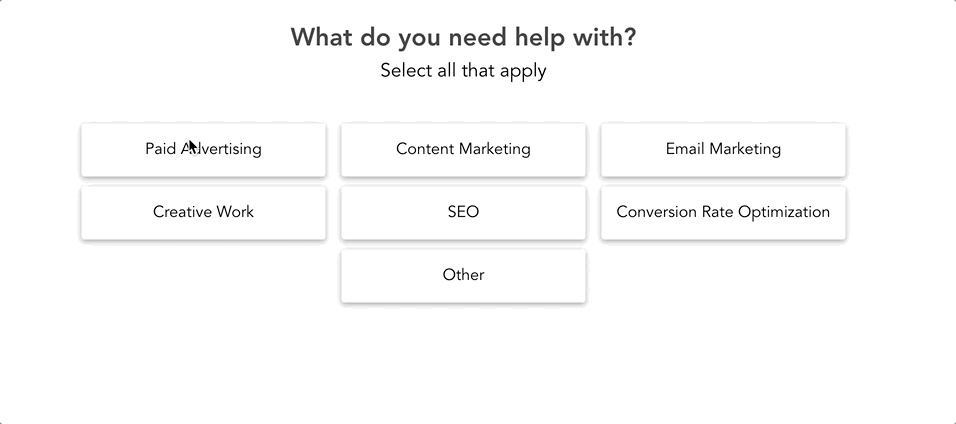
The reason multi-step forms help fight against form spam?
Well by breaking your form into multiple steps, it actually does get a bit harder for spam bots or those pesky manual spammers (yep, those guys paid by companies to spam messages for link juice) to get through to your form.
With that said, despite the benefits of multi step forms, they aren’t a foolproof solution. Spammers can still get past a multi step form. But they’re a step in the right direction (pun totally intended).
Curious to see some multi-step form examples in action? I’ve got you covered – check out this post.
Positives and negatives of using multi-step forms to prevent form spam:
Positives:
- Leveling up your forms
- Gaining better data about your leads
Negatives:
- There’s still a chance of being spammed
Use Google reCAPTCHA to block bot submissions
Google reCAPTCHA is our second proven method to preventing spam.
No, I’m not talking about those garbled, hard-to-read words that were more like a speed bump in your forms.
Google clearly saw an issue with that method and gifted us with reCAPTCHA. Instead of squinting at indecipherable text, website visitors only need to click a button:

Pretty neat, huh?
If you’re thinking… “I don’t want to bother my prospects with reCAPTCHA, even if it’s just clicking a button.”
Well, that’s where Google’s Invisible reCAPTCHA comes in. The good news here is that it only kicks into action when Google’s algorithms suspect bot-like behavior. Otherwise, your genuine users won’t even know it’s there.
ReCAPTCHA is user-friendly, reduces spam, bolsters security, and most importantly, doesn’t annoy your prospects. It’s so great that we even offer a direct integration over here at GetLeadForms. Here’s a quick tutorial showing you how to setup Google Invisible ReCAPTCHA in your forms.
Here are the pros and cons of using Google reCAPTCHA to block bots:
Positives:
- Highly effective method of blocking spam
- Little impact on conversion rates as most users don’t even see it
Negatives:
- Adds a small amount of friction to the process
- The experience can feel a bit odd for those users who do trigger it
In the end, every anti-spam method has its trade-offs. But with Google reCAPTCHA, you’re definitely on the right track to keeping those pesky spam submissions out of your CRM.
Ask simple and clearly defined questions
One of the simplest ways to weed out spam while getting more valuable info from your leads is by asking a straightforward, clearly defined question within your form.
After-all, who knows more about your product or service than genuine prospects, right?
For instance, you could ask: “What’s your budget?” or “When would you like to get started?” or even “What’s your availability?” like in this solar quote lead gen form below:
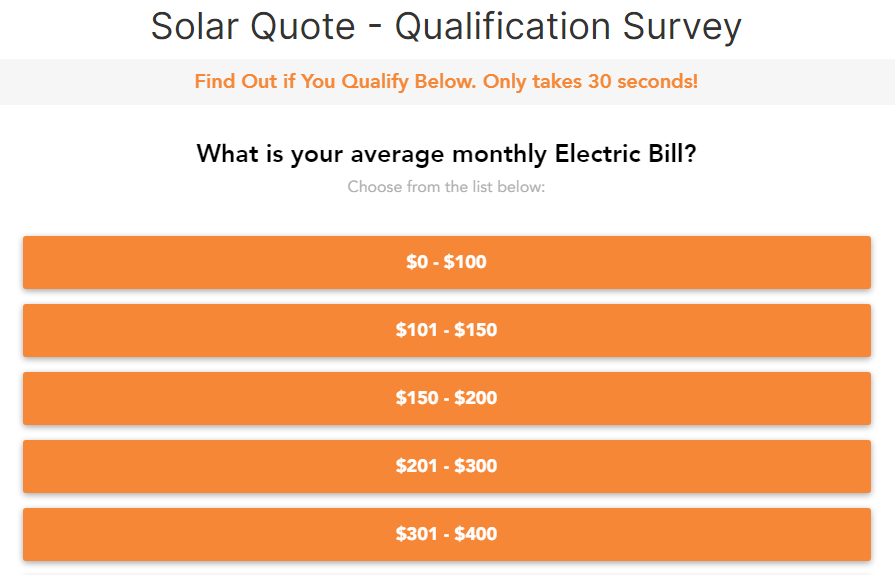
You could even ask an open-ended question, inviting prospects to spill the beans about their project, like in this pest control lead form.
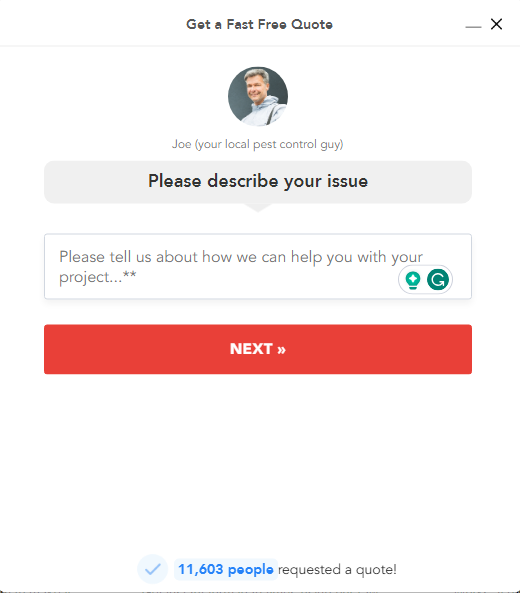
It might add a little friction to your forms and potentially cause a slight dip in conversion rates. However, not all friction is harmful, especially if it brings higher-quality leads.
The great thing about this method is that it doubles as a natural part of your lead qualification process. It lets you gather valuable insights about the lead from the get-go. But, just like a raincoat in a thunderstorm, it’s not entirely watertight. Manual spammers or those clever enough to program their systems to answer these questions can still slip through.
Positives and negatives to this method:
Positives:
- An additional way to qualify leads
- Injects positive friction into the process
Negatives:
- It’s not a foolproof method and can still be exploited
So, while this method might not be an impenetrable fortress against form spam, it’s another handy tool to enhance lead quality and thwart those spammy submissions.
Verify phone numbers using OTP phone verification
As I recently discussed in this post about lead verification, roughly 1 in 4 leads are invalid, and about 30% of these invalid leads come down to a phone number issue.
Enter OTP Phone Verification, my go-to method for real-time phone number verification.
Here’s how it works:
Step 1: Your prospect enters their phone number into your lead form.
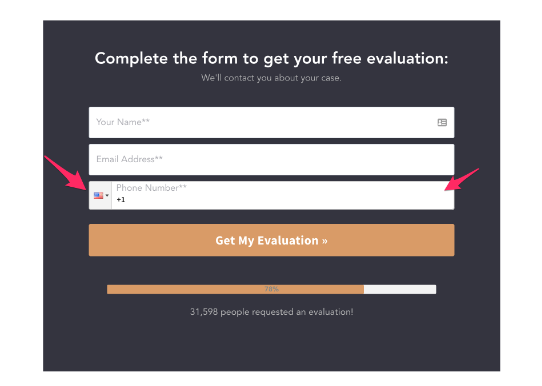
Step 2: If phone verification is enabled, the form sends a unique one-time, four-digit PIN code zapped to the phone number your prospect just provided.
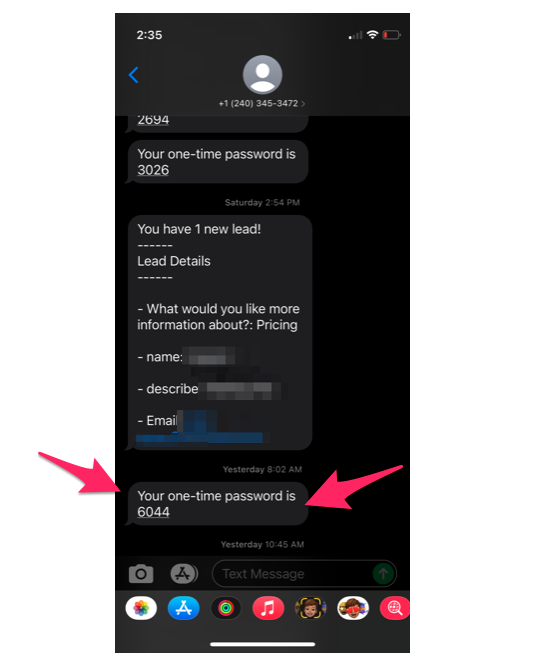
Step 3: Your prospect takes this PIN code and pops it into the LeadForm. 
If the passcode is entered correctly, our system gives it the thumbs up, allowing the prospect to carry on with the rest of the form. But if the passcode is off or missing, they’ll hit a roadblock and won’t be able to submit the LeadForm. Don’t worry, though. If they mistyped their number, they can hop back, correct it, and generate a new passcode.
You might be thinking, “Wait a minute, won’t this affect my conversion rates?”
The short answer — Yes, it might. But remember that talk about positive friction? Sometimes, introducing a hurdle can be a good thing, especially if it filters out the fluff and leaves you with higher-quality leads.
Plus, if you’re in the business of selling leads or passing them to clients, this becomes an attractive proposition. Being able to guarantee qualified leads with verified phone numbers? Now, that’s a tough offer to refuse. To learn more about the magic of OTP phone verification, check out this post.
Positives and negatives to verifying phone numbers using OTP phone verification
Positives:
- Bots can’t game this system
- Delivers the highest quality phone verified leads
- Makes your service more appealing if you’re selling leads
Negatives:
- Might only be useful if collecting phone numbers is a part of your strategy
- Might see a slight dip in form conversion rates
In short, if phone numbers are an essential part of your lead gen strategy, OTP phone verification might be the secret ingredient you’re looking for.
Use email verification in your forms to prevent spam email submissions
Email verification is like a cousin to OTP phone verification, but it pivots towards verifying email addresses.
This method helps prevent those pesky typos and fake email submissions from landing in your CRM by checking for syntax validation, domain validation, mailbox existence, catch-all addresses, and much more.
One of the highlights of real-time email verification using an API is its seamless experience. Your prospects can glide through your form and get verified in real-time without lifting an extra finger. It’s probably one of the least friction-filled ways to verify your leads.
When it comes to implementing email verification, there are a handful of services like Neverbounce, Kickbox, and Clearout. These tools can help you by offering APIs for real-time email verification right in your form.
Positives and negatives to using email verification in your forms to prevent spam email submissions
Positives:
- Enhanced quality of email leads
- Verified email addresses
- Curbs fake or mistyped spam emails
- Offers a frictionless experience
Negatives:
- It’s not always 100% accurate
- You’ll incur additional costs to verify leads
Use invisible honeypots to block spam bot attacks
We are now at the final method in our spam-fighting arsenal, and one of the most frictionless ways outside of email verification – using an invisible honeypot.
If you’d prefer not to saddle your online form with reCAPTCHA, this technique can be a very effective approach.
The honeypot system works as an ingenious trap. It creates an extra phony form field visible only to bots. When the bot completes this field, an alert is sent to the system, which then flags the submission, and ensures it never makes it through your form.
The beauty of it is that prospects won’t see this extra field, so their experience is as smooth as silk. Everything takes place behind the scenes, unrecognized to them.
I can vouch for honeypots. They’re convenient, and we’ve even integrated them into our forms over here at GetLeadForms. But, like every system, they aren’t invincible. Clever individuals can find loopholes and ways to evade the honeypot trap. One weakness is that honeypots can’t fend off malicious folks who are determined enough to submit bogus information in your form manually.
Let’s evaluate the pros and cons of deploying honeypots:
Positives:
- It’s frictionless, so it doesn’t disturb the user’s experience
- Blocks most spam bots, reducing the spam submissions you receive
Negatives:
- It can be a little tricky to set up yourself
- Doesn’t block manual, human-made spam submissions
Which option for stopping form spam is right for you?
Well, there you have it – six of the most effective methods to stop form spam. But now comes the real question: which option is right for you? It might be one of these methods, a combination, or even all.
This choice is less about picking a winner and more about balancing several factors.
On the one hand, there’s the ease of implementation. How quickly can you get this up and running?
On the other hand, you’ve got to consider the friction you’re willing to introduce into your forms. Adding more hoops can deter spammers but might also prevent genuine prospects from submitting you forms. You don’t want to turn your form into an obstacle course. It’s a fine line to walk.
Remember, there’s no magic bullet for form spam. It’s a constant battle since spammers are constantly evolving. But with the right tools and knowledge, you can tip the scales in your favor. And hopefully, this post has armed you with just that.
If you’re on the hunt for a simple solution to try out those lead verification techniques I talked about, give GetLeadForms a shot. It’s got Invisible reCAPTCHA, lead verification, honey pots, and other cool stuff. Grab a free trial here.
For more related content, check out this post on the top three ways to prevent lead fraud and how to spot it.

